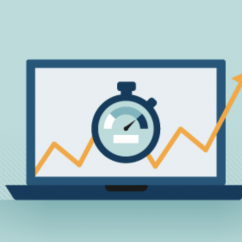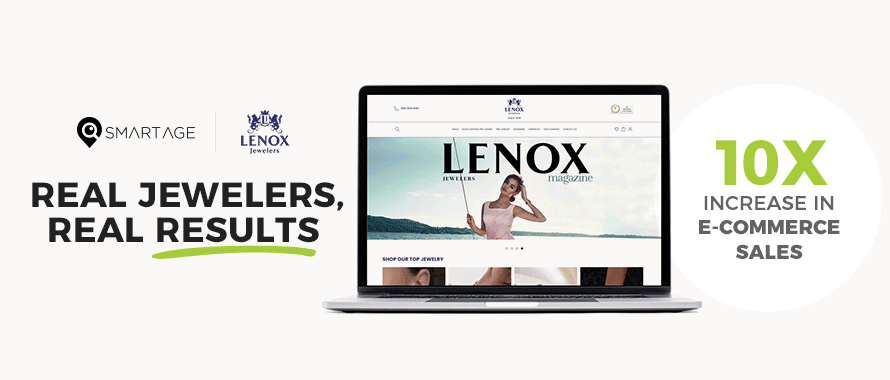Jewelry ECOMM Tech
Increasing Website Conversion Rates | August 24, 2024 (0 comments)

It’s not 1995. I think we all know by now that having a high-performing website is crucial for jewelers. But what does "high-performing" really mean?
It's not just about driving traffic; it's about converting that traffic into tangible sales. This is where website conversion optimization comes into play. In this article, we will delve into various strategies and techniques to increase your website conversion rates effectively.
Understanding Website Conversion Optimization
Website conversion optimization is the process of enhancing your website to encourage visitors to take specific actions, known as conversions. These actions can range from making a purchase to filling out a contact form or signing up for a newsletter. The ultimate goal is to turn casual visitors into engaged users who are willing to take the next step with your business.
By focusing on conversion optimization, you can make the most out of the traffic you already have, thereby improving your overall return on investment (ROI). This approach ensures that your marketing efforts are not wasted on attracting visitors who don't end up taking any meaningful action on your site. Instead, you create a streamlined experience that guides users towards conversion, making your website a more effective business tool.
Why Is Conversion Rate Important?
Before we dive into the how-to, let's discuss why conversion rate is a critical metric. A higher conversion rate means that your website is effectively turning visitors into customers or leads. This directly impacts your bottom line and improves the return on investment (ROI) from your digital marketing efforts. A good conversion rate indicates that your website is user-friendly, trustworthy, and providing value to its visitors.
Moreover, focusing on conversion rates can help you identify and address potential issues with your website. For instance, if your site has a high bounce rate, this could indicate problems with user experience or content quality. By understanding and optimizing your conversion rate, you can make data-driven decisions that enhance the overall performance and profitability of your website.
Analyzing Current Conversion Metrics
To improve your conversion rates, you first need to understand your current performance. This involves tracking and analyzing various conversion metrics. These metrics provide insights into how users interact with your site and where they might be dropping off in the conversion process.
Analyzing these metrics allows you to identify patterns and trends that can inform your optimization strategies. By understanding where your site is performing well and where it needs improvement, you can make targeted changes that are more likely to yield positive results.
Key Conversion Metrics to Track
- Conversion Rate: The percentage of visitors who take a desired action. This is your primary metric for assessing the effectiveness of your website.
- Bounce Rate: The percentage of visitors who leave your site after viewing only one page. A high bounce rate can indicate that your landing page is not engaging enough.
- Average Session Duration: The average amount of time visitors spend on your site. Longer session durations often correlate with higher engagement.
- Pages Per Session: The average number of pages a visitor views in a single session. More pages per session can indicate that visitors find your content interesting and relevant.
By keeping a close eye on these metrics, you can gain valuable insights into user behavior and identify areas for improvement. This data-driven approach is essential for effective conversion optimization.
Strategies to Increase Conversion Rates
Once you've gathered data, it's time to implement strategies to improve your conversion rates. The key is to make data-driven decisions that address the specific issues identified in your analysis.
These strategies can range from simple tweaks to your site design to more complex changes in your marketing approach. The goal is to create a seamless, engaging user experience that encourages visitors to take the desired action.
Optimize Your Call-to-Actions (CTAs)
CTAs are the prompts that encourage visitors to take action. They should be clear, compelling, and strategically placed throughout your site. The language, design, and placement of your CTAs can significantly impact their effectiveness.
- Use Action-Oriented Language: Words like "Buy Now," "Sign Up," or "Learn More" create a sense of urgency. These phrases encourage users to take immediate action rather than procrastinate.
- Placement: Ensure your CTAs are easily visible and placed where users are most likely to see them. Common placements include above the fold, at the end of blog posts, or within pop-up forms.
- Design: Use contrasting colors and make sure the text is readable. A well-designed CTA button can stand out and attract clicks.
- Additionally, consider A/B testing different versions of your CTAs to see which ones perform best. This can help you fine-tune your approach and maximize the effectiveness of your CTAs.
Improve Page Load Speed
A slow website can deter users from staying and converting. Page load speed is a crucial factor in user experience and can significantly impact your conversion rates. Faster websites not only provide a better user experience but also rank higher in search engine results.
- Optimize Images: Compress images without sacrificing quality. Large image files can slow down your site, so use tools like TinyPNG to reduce their size.
- Use a Content Delivery Network (CDN): This can help speed up the delivery of your website content to users worldwide. CDNs store copies of your site on multiple servers, reducing the distance data needs to travel.
- Minimize HTTP Requests: Reduce the number of elements on your page that require HTTP requests. This can include combining CSS files or using CSS sprites.
Regularly monitor your site's speed using tools like Google PageSpeed Insights or GTmetrix. These tools can provide specific recommendations for improving your page load speed.
Optimizing Landing Pages
Landing pages are often the first point of contact for new visitors. Optimizing these pages is crucial for improving conversion rates. A well-designed landing page can capture visitor interest and guide them towards taking the desired action.
Effective landing pages are focused, with a clear value proposition and a strong call-to-action. By optimizing these elements, you can create a more compelling experience that drives conversions.
Elements of a High-Converting Landing Page include:
- Clear Headlines: Ensure your headlines are concise and convey the value proposition. A good headline should immediately communicate what the visitor will gain by taking action.
- Compelling Copy: Use persuasive language that addresses the visitor's pain points and offers a solution. Focus on benefits rather than features to make your copy more engaging.
- Strong CTAs: Include prominent and action-oriented CTAs. Make sure they stand out and clearly indicate the next step the visitor should take.
- Visuals: Use high-quality images or videos that support your message. Visuals can help convey your value proposition more effectively and make your landing page more appealing.
Consider using A/B testing to experiment with different landing page elements. This can help you identify the most effective combinations for driving conversions.
About The Author:
Mike Hauben is the Creative Director and Marketing Director for the Centurion Jewelry Show. He has over fifteen years experience and holds a number of digital certifications (Google, Yoast, Hubspot, and more). Mike has gained recognition among the jewelry industry in recent years as a popular keynote speaker, author, and trusted expert. He’s spoke at conferences like Centurion and JCK at the Javits Center.
He’s received an Award Of Excellence from MMA Business Magazine and is a black belt in Brazilian Jiu Jitsu. He lives with his family in Atlantic Beach, NY.
Learn more: haubenmedia.com


